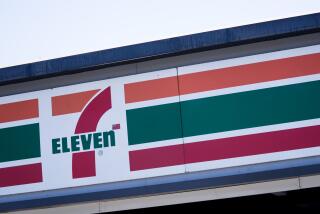Crews Brace for Possible Mudslides : Disaster: Two aftershocks startle sleepers. Officials urge tent dwellers to move indoors as storm moves in.
- Share via
A day after being buffeted by a pair of strong aftershocks, the Southland is bracing for the strongest storm of the winter season today, increasing the risk of mudslides and flash-flooding in fire and quake-ravaged regions.
Storm preparations come as the area is still jittery from two aftershocks early Sunday that roused quake-weary residents.
The first, at 5:19 a.m., measured magnitude 4.1, a Caltech seismologist said. It was the 44th aftershock to register 4.0 or higher since the Jan. 17 earthquake, and was followed by a second jolt at 5:22 a.m. that measured 3.6. Nearly one-fourth of the 3,600 measurable aftershocks have registered 3.0 or better. The two tremors, which caused no apparent damage, were centered about two miles east-northeast of Granada Hills, according to Caltech seismologist Kate Hutton.
Meanwhile, the storm, which arrived Sunday night, is expected to unload one to two inches of rain in the Los Angeles Basin, with even more precipitation expected in the mountains, where as much as a foot of snow may fall above the 4,000-foot level.
“It’s pretty big, a lot bigger than the last one,” said meteorologist Dean Jones of WeatherData Inc., in Wichita, Kan. “There could be flash-flooding and mudslides, especially in the areas hit by the October fires, where the land is still barren. Heavy rains in those areas could cause some problems.”
In anticipation of the storm, Los Angeles County firefighters have put more crews on duty and readied two sand-filled dump trucks for emergency sandbagging in mudslide-prone areas. The department’s swift-water rescue team has been placed on alert.
The storm was also expected to churn up high tides and surf on west-facing beaches today, making swimming and surfing risky, forecasters said.
The Cooperative Medfly Project said Sunday that any rains today would delay until at least Tuesday the aerial spraying of malathion over an 18-square-mile area of Corona. The controversial pesticide spraying was scheduled for tonight.
Because of the storms, quake victims who are still living in makeshift homes and tents are being urged to seek cover at Red Cross permanent shelters.
American Red Cross officials reported Sunday that they had closed the last two of what had been more than a dozen formal tent shelters after persuading the residents to move indoors. Red Cross spokeswoman Peggy Hinz said a handful of residents remaining at the large tent at Church on the Way in Van Nuys moved to indoor shelters, and about 100 from the Le Conte Junior High School shelter in Hollywood were taken by van to two indoor shelters.
Originally, Red Cross officials had erected the large tents outside some of their indoor shelters--not because of a shortage of indoor space, but because many who came seeking aid were reluctant to stay indoors in the wake of the earthquake. But the expected heavy rains led Red Cross officials to hasten the phase-out of their tents.
Around Southern California, officials conceded that many people remain outdoors, living in their own smaller tents, either outside damaged homes or at schools and parks. Disaster assistance workers have been venturing into hard-hit neighborhoods to reach them, encouraging them to seek help at government disaster assistance centers.
Officials also said 26 shelters run by the American Red Cross and the Salvation Army remain open, housing about 3,000 people. The Red Cross reported that it has housed a total of 23,872 people, at a total of 47 shelters, since the earthquake. The Red Cross also served more than a million meals at the shelters and from 127 mobile food vans.
The agency reported that it has spent more than $3.6 million in various quake relief efforts and expects to spend a total of $36 million.
At a daily briefing on earthquake relief efforts, federal and state officials reported that so far:
* 286,268 victims have registered for state and federal assistance, either at disaster application centers or via a toll-free “tele-registration” telephone number, (800) 462-9021. Outreach workers are continuing their efforts to identify the many victims who have not applied for help, said Jose Bravo, deputy federal coordinating officer for the Federal Emergency Management Agency.
* 31,258 federal temporary housing checks, totaling $97.8 million, have been issued to help victims with rent and other housing needs. “We’re seeing record speed in getting people housing,” said Paul Flores, deputy director of the state Office of Emergency Services.
* 890 home and commercial loans, valued at $28.6 million, have been approved by the Small Business Administration.
Officials say the disaster relief applications from the Northridge quake were expected to surpass the record of 304,000 from Hurricane Hugo by Sunday or today.
*
Because of an overwhelming demand for help, a disaster application center in the Pico-Union area will open at 1 p.m. Tuesday at the Toberman Recreation Center, 1725 Toberman St. The center will be open until 7 p.m. Tuesday and from 9 a.m. to 7 p.m. daily thereafter.
Federal officials initially moved a temporary mobile office into the area, expecting to help about 200 people over a few days. But the mobile unit’s staff has so far served more than 1,300 people.
The Toberman site is the 21st assistance center opened by relief officials. Another 13 mobile units are serving smaller communities.
Quake victims can apply for a number of federal, state and local assistance programs at the centers. In addition to FEMA officials, representatives from various other agencies, including the Small Business Administration and the Department of Motor Vehicles, help staff the centers.
Times staff writer John Chandler contributed to this story.
More to Read
Sign up for Essential California
The most important California stories and recommendations in your inbox every morning.
You may occasionally receive promotional content from the Los Angeles Times.













